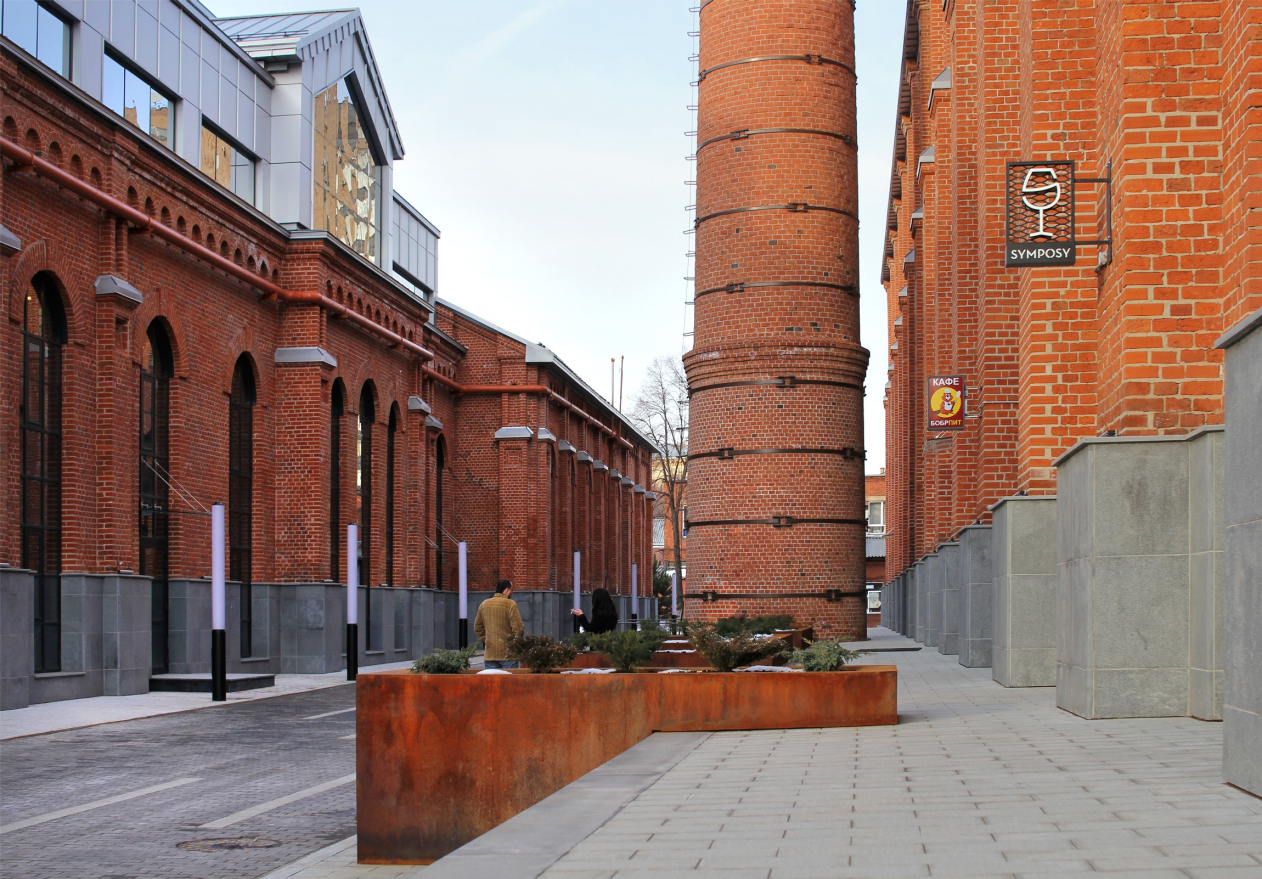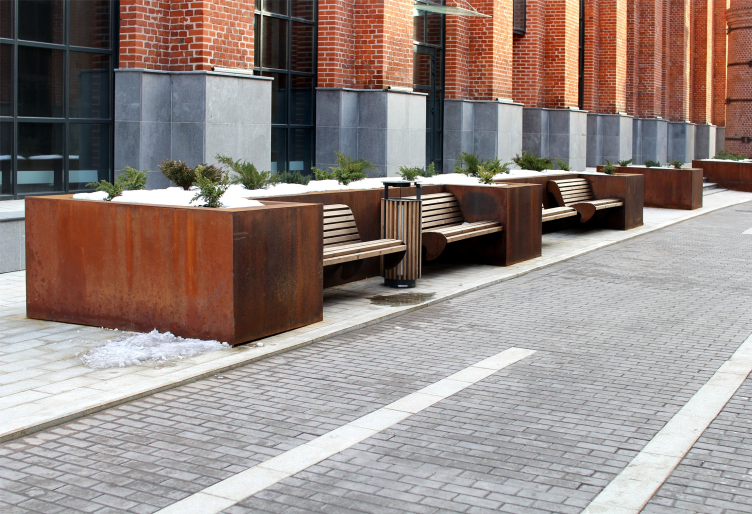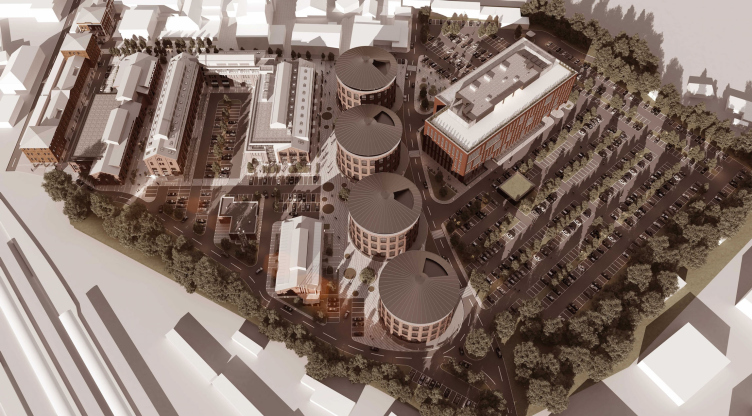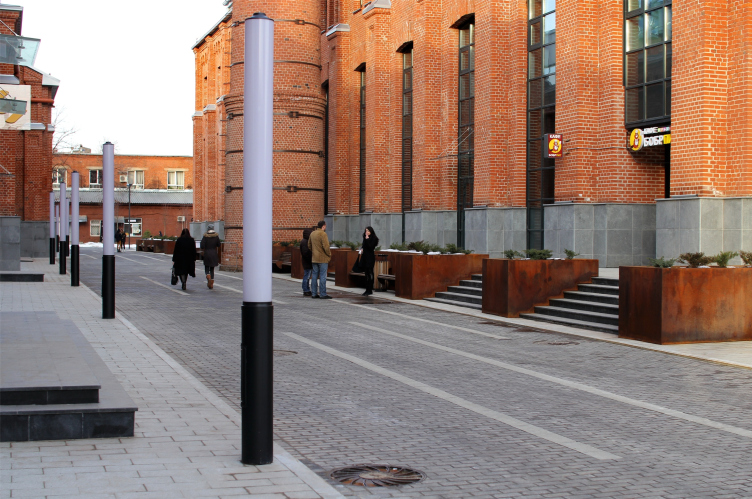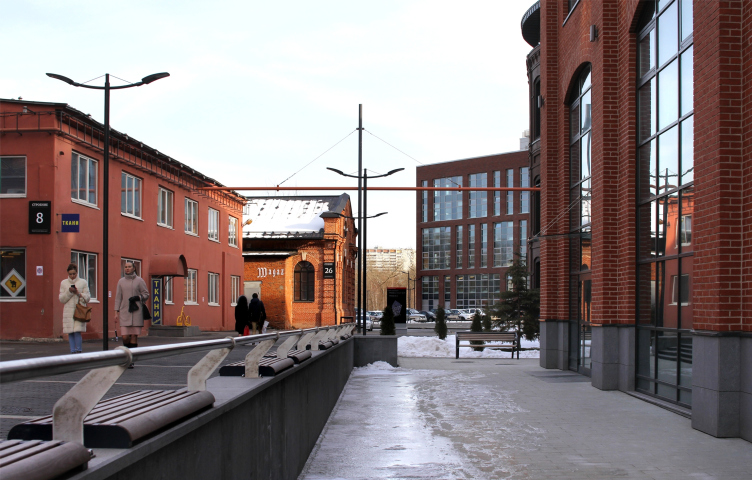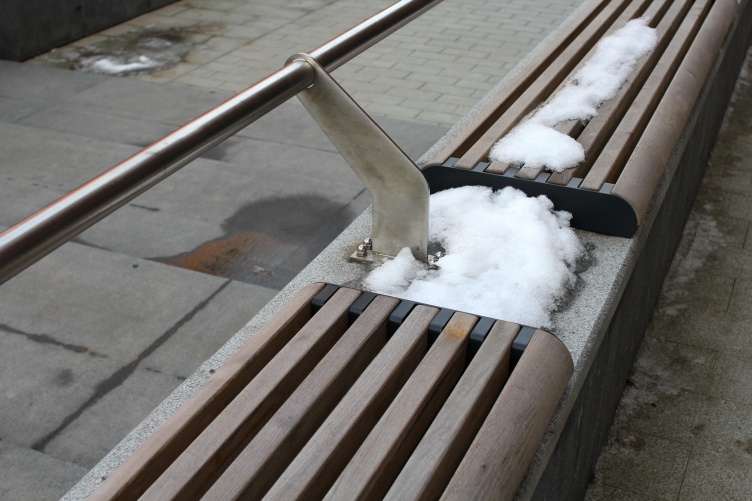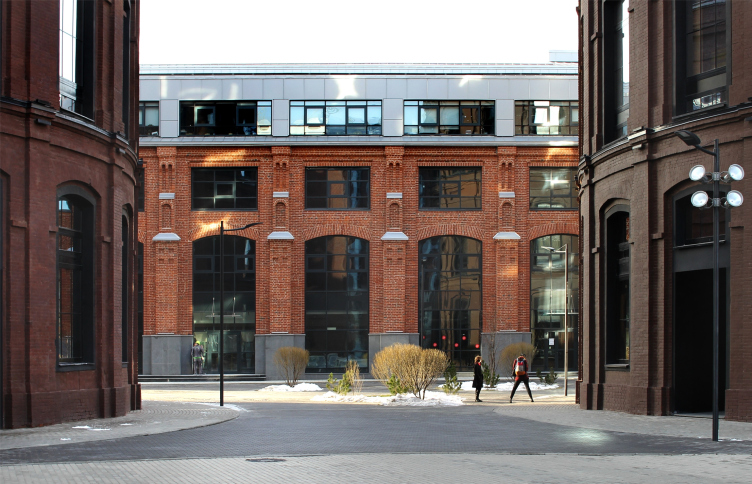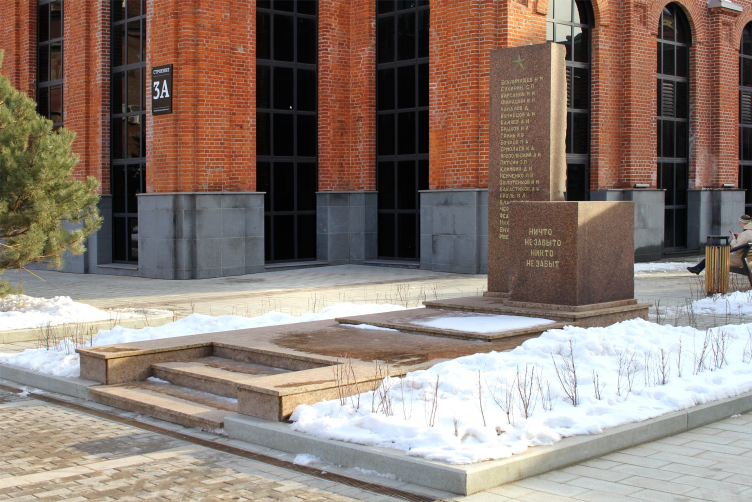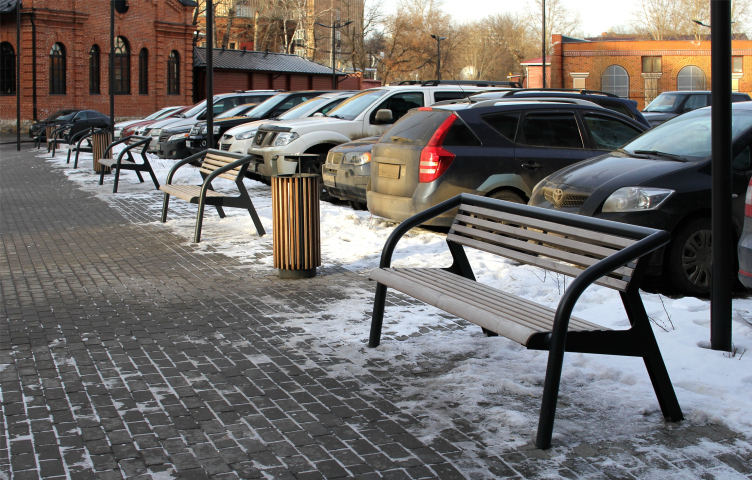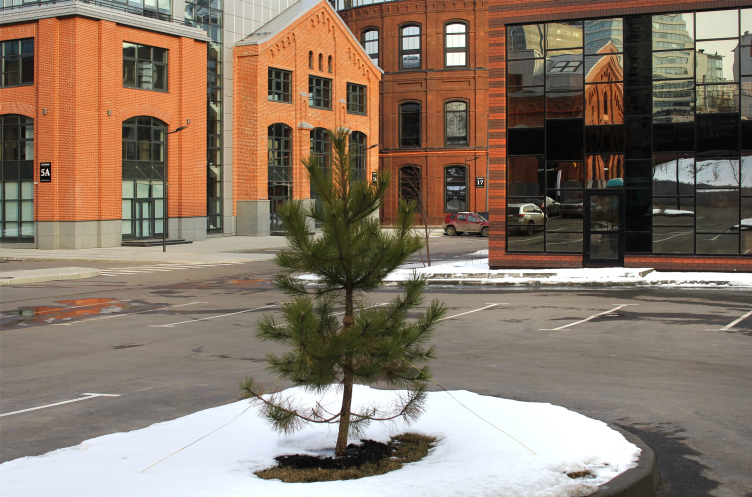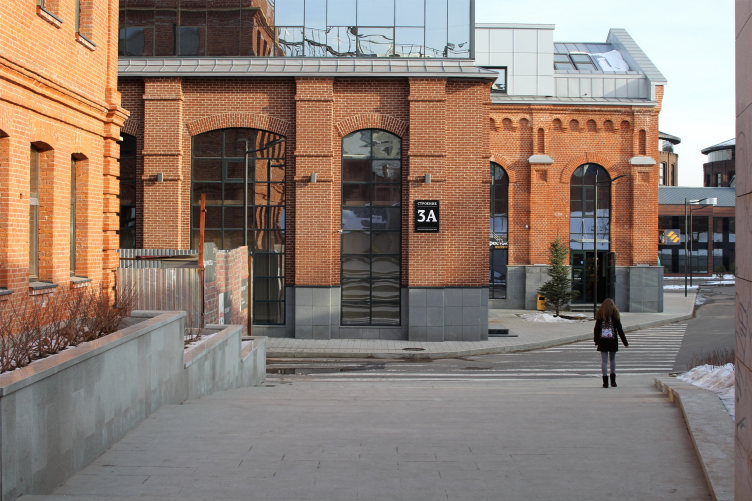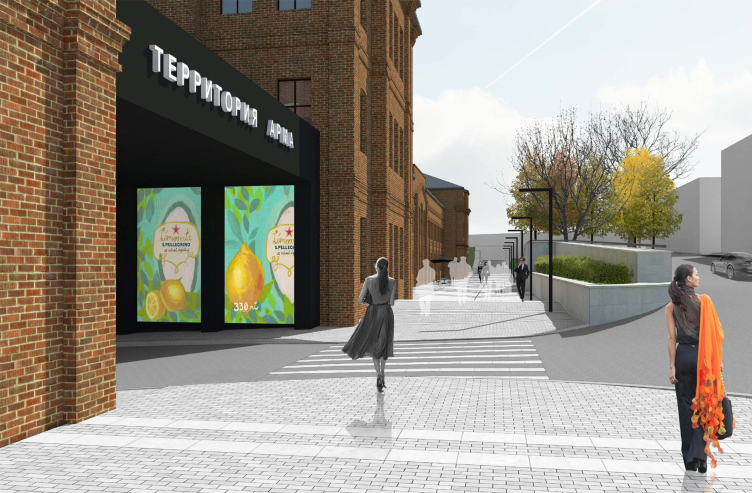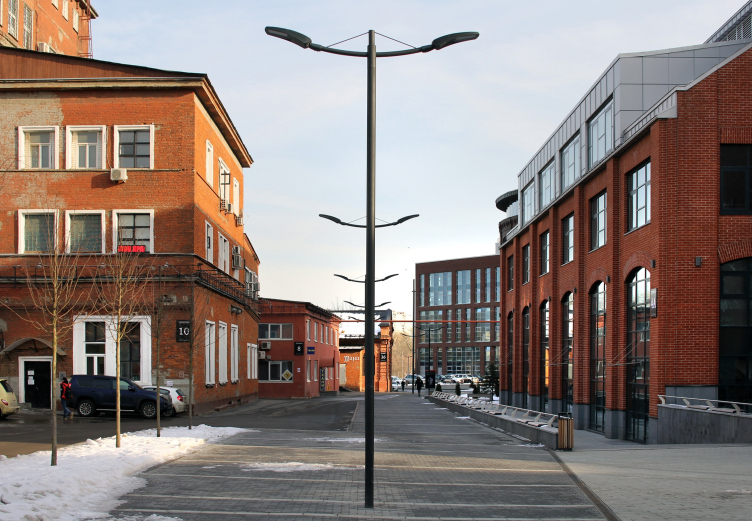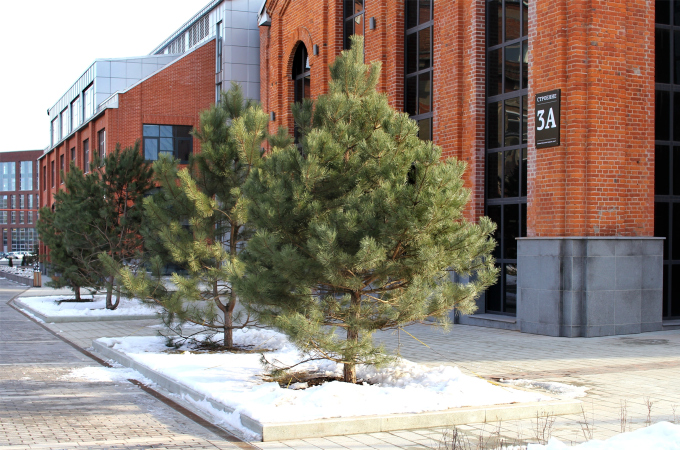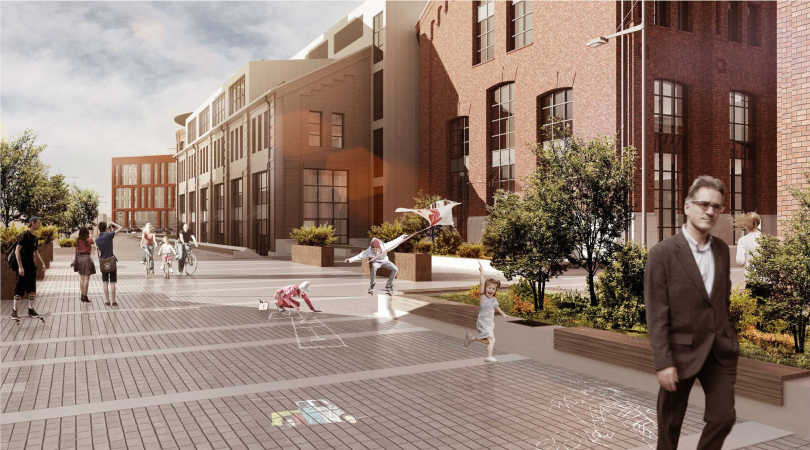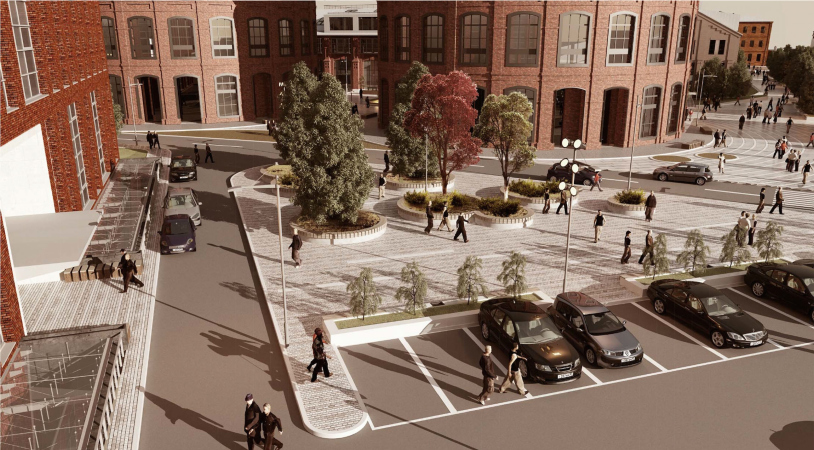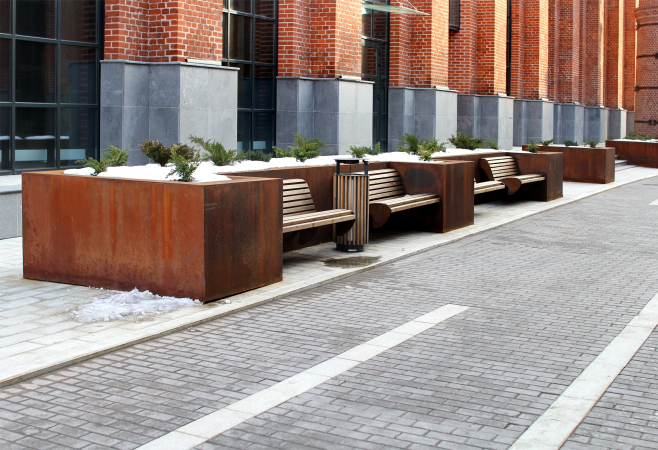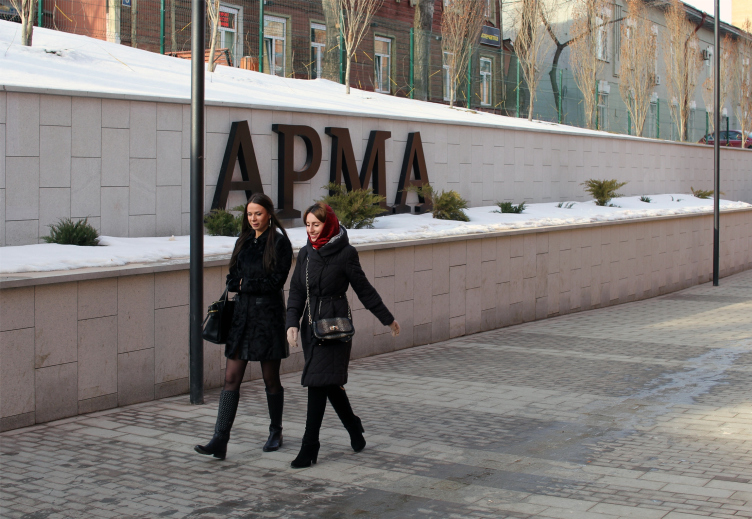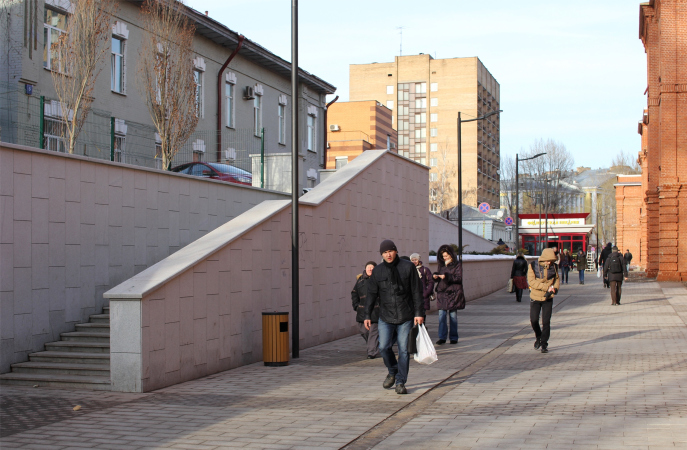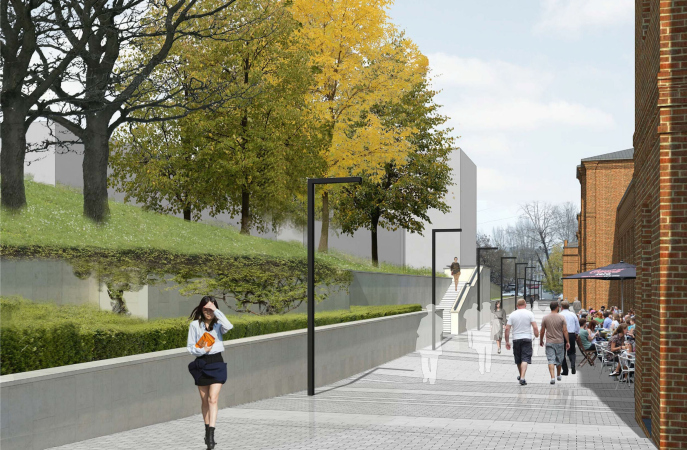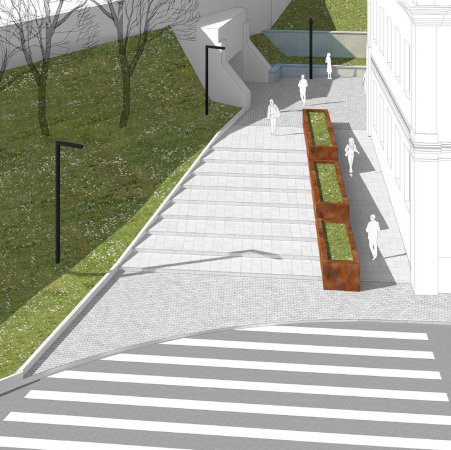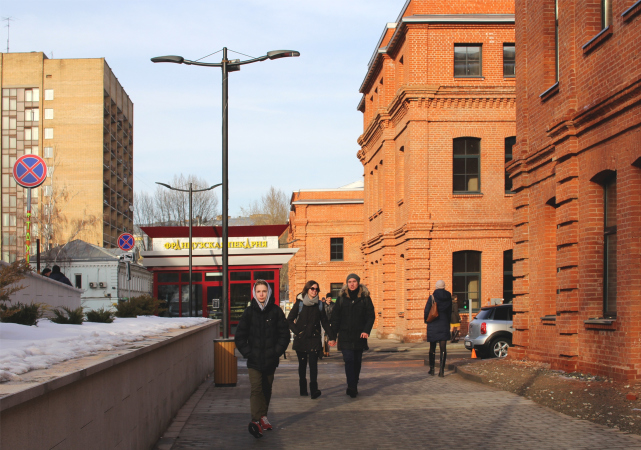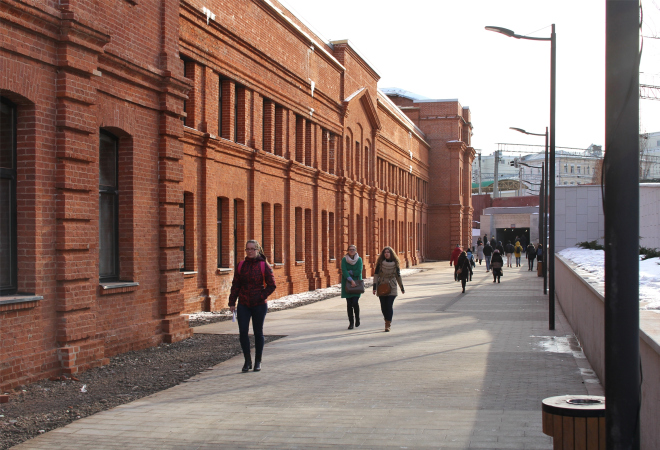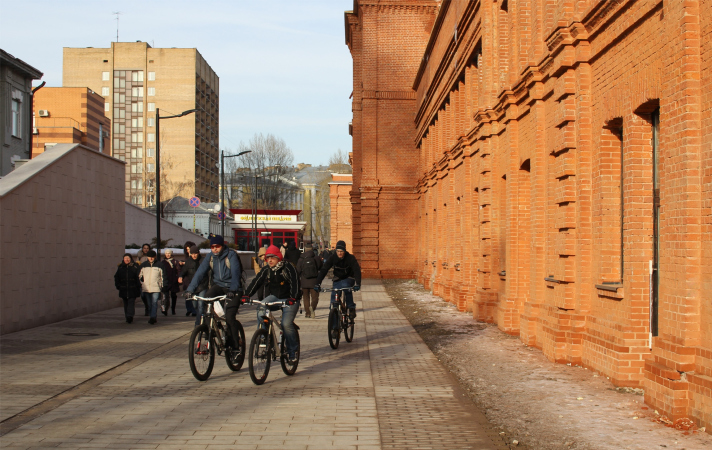Over the last five years, the very concept of “site improvement” has already become hoary, and has convinced everyone of its importance. The notion of commercial value of architecture has finally grown outside from within: from the beautiful interior of the 90s, through the beautiful façade of the 2000s – up to the understanding of the value of a conveniently equipped urban space. In this case, there are two projects: the architects of Sergey Kiselev & Partners designed the site improvement of the former factory in 2012, implemented it in 2014-2015, and worked on the adjacent the Nijniy Susalny lane in 2015, having the whole work finished by the City Day in September. Two projects – one goal: to bring the space of the former factory and its surrounding area to shape. So, it all calls for having a look at the whole improvement of “Arma”.
It has at least two special features. First, the means are rather economical and minimalistic, with no claim either to modernistic luxury of materials, or to Biedermeier with curving backs of the benches – that we so much enjoy on Moscow boulevards. Perhaps, it is due to the creativity of the block – so its residents would treat any frills ironically by definition; but it cannot be ruled out that it were the beliefs of the chief architect of both improvement projects – Alexey Medvedev – a confirmed minimalist, but the improvement turned out to be in a severe “factory-like” style. And quite right: some trinkets would look quite out of place next to a brick tube growing out of the ground, or a gas valve, growing out of the wall. The place itself dictates the approach. At the same time, compared to the neighboring art-blocks of Vinzavod (Rus. “winery”) and Artplay, whose improvement is hardly noticeable – if in fact present, the effort invested here is much more significant.
Arma: pedestrian boulevard between units 3 and 4 © Sergey Kiselev and Partners. Photo © Julia Tarabarina, 2016
Arma: site improvement. Bird's height view. Visualization, 2012 © Sergey Kiselev and Partners.
Arma: site improvement. © Sergey Kiselev and Partners. Photograph © Julia Tarabarina
Elements of site improvement concentrate towards the center and rarely at the periphery, searching the territory for a coziness of the pedestrian “nucleus” and leaving the outer contours to vehicles. The main hero here is a pedestrian boulevard between the 3d and 4th buildings with the mentioned tube and valve. The architects used corten steel here – a brutal material, but not at all cheap, just from the artistic kind. It coats the flower-beds lifted up to a knee-level and framing the wooden benches. On the other side, is a line of street-lights made in tubes of milk glass, setting the same, not very high man-oriented scale. This is a boulevard for sitting around and chatting, to stop for a while and catch breath.
Arma: site improvement. © Sergey Kiselev and Partners. Photograph © Julia Tarabarina
Arma: site improvement. © Sergey Kiselev and Partners. Photograph © Julia Tarabarina
Arma: site improvement. © Sergey Kiselev and Partners. Photograph © Julia Tarabarina
The second boulevard coincides with the main axis and is on the contrary very mobile. It is longitudinally divided between the cars coming from the Nijniy Susalny lane through Check-point No.1 and pedestrians. The dividing line is formed by a line of lights – good modern street-lamps, lighting both sides. The pedestrian part, following the change of height (which exceeds 2 meters on “Arma” territory), is also divided in two: the higher and lower ones. The first adjoins the motor-car area, and leads inside and even straight through. The second one lies about 1,5 meters lower – we go down the steps to get here, and from this point, we can arrive in buildings 4-5: here the traffic slows down, and the mini-boulevard becomes a mini-square.
Arma: site improvement. © Sergey Kiselev and Partners. Photograph © Julia Tarabarina
Arma: site improvement. © Sergey Kiselev and Partners. Photograph © Julia Tarabarina
The two boulevards are the axle of this space and its inner life, but they also have some branches: after completion of all works, the park with the Great Patriotic War monument between buildings 3 and 1 will be evidently stretched into a pedestrian and automobile side street; the area between gas-holders and building 5 has been already turned into a park with round lawns, where the Moscow girls arrange photo-sets.
Arma: site improvement. © Sergey Kiselev and Partners. Photograph © Julia Tarabarina
Arma: site improvement. © Sergey Kiselev and Partners. Photograph © Julia Tarabarina
Arma: site improvement. © Sergey Kiselev and Partners. Photograph © Julia Tarabarina
Arma: site improvement. © Sergey Kiselev and Partners. Photograph © Julia Tarabarina
Arma: pedestrian zone improvement. © Sergey Kiselev and Partners. Photograph © Julia Tarabarina
Another peculiar feature is the openness of the territory, at which every industrial zone reconstruction in Moscow is rhetorically aimed, but ultimately closes in anyway – fully or emotionally – and places such check-points, where one would hardly try to enter for no good reason. Here, it is a bit different: people enter through freely and stay inside rather leisurely. The authors managed to create an inner-city district. It can be clearly felt that this territory has been added to the city and has the potential of further development. Certainly, providing four exits also matters greatly for the effect of openness: two from Nijniy Susalny lane, one from Mruzovskiy and the fourth entrance point – for the ones who are aware – from a nameless lane at the northeast corner.
Nijniy Susalny lane, formerly overloaded with height discontinuity and snack stands, has been cleared, improved and presented to the city. All the height differences have been considered and used to create a “stepping” space with natural lawns and wide flights of steps – it has become much easier to breathe in here, the “gorge” feeling has been replaced with the delight from unpredictable Moscow relief: partly bluff, partly flat.
Arma: pedestrian zone improvement. © Sergey Kiselev and Partners. Photograph © Julia Tarabarina
Arma: the main entrance. Version 1. Visualization, 2015 © Sergey Kiselev and Partners
| where: | Russia, Moscow | |
| date | 2012 — 2013 / 2013 — 2015 | |
| function: | Masterplanning / Landscaping | |
| studio: | Sergey Kisselev & Partners http://www.sk-p.ru/ | |
| architect: | Alexey MedvedevVladimir Labutin |
| where: | Russia, Moscow | |
| date | 2012 — 2014 / 2014 — 2015 | |
| function: | Masterplanning / Landscaping | |
| studio: | Sergey Kisselev & Partners http://www.sk-p.ru/ | |
| architect: | Alexey Medvedev |

